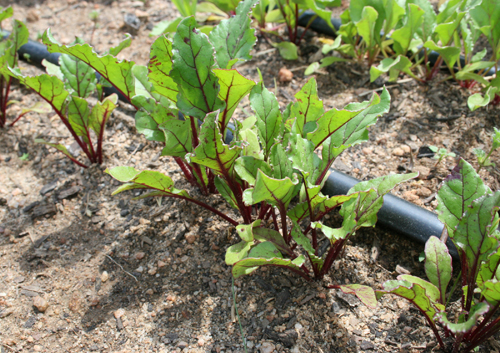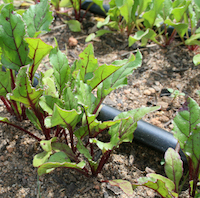Georgia’s climate is perfect for growing many vegetables. It’s also the perfect place for plant-destroying diseases. But there are things home gardeners can do to protect their bounty.
First, get in the garden regularly to scout for problems, especially when conditions are wet and warm. During these times, vegetable plants are more susceptible to diseases caused by fungi and bacteria, said David Langston, a vegetable plant pathologist with University of Georgia Cooperative Extension.
Nematode damage is more evident, though, when the garden is dry. To test soil for nematodes, submit a sample through the local UGA Extension office.
Viral diseases can show up anytime, Langston said. Many plant diseases can be on or within the seeds. Because most gardeners can’t distinguish healthy seeds from diseased ones, make sure to buy seeds from a reputable dealer. Also, follow the directions on when and how to plant them.
“Seeds should not be saved from year to year,” Langston said. “This is important to prevent a number of diseases.”
Using varieties that are resistant to plant diseases is the best way to avoid losses. The types of disease resistance for each variety are noted on transplant or seed containers or in a seed catalog.
To help keep a garden disease-free, Langston said, remember:
1. Don’t plant the garden near or beneath trees. Shade reduces the drying of plant foliage after rain and increases the chances of diseases. Besides, vegetables like a lot of sunlight.
2. Rotate crops. Grow the same or closely related vegetable plants in the same soil only once every three to five years. This practice starves out most pathogens that cause stem and leaf diseases.
Vegetable families include:
- Alliaceae (chives, garlic, leeks and onions)
- Apiaceae (carrots)
- Asteraceae (lettuce)
- Brassicaceae (broccoli, Brussels sprouts, cabbage, cauliflower, collards, mustard, radishes, rutabagas and turnips)
- Chenopodiaceae (spinach)
- Cucurbitaceae (cantaloupes, cucumbers, honeydew melons, pumpkins, squash and watermelons)
- Fabaceae (all beans, English peas and Southern peas)
- Malvaceae (okra)
- Poaceae (corn)
- Solanaceae (eggplant, peppers, potatoes and tomatoes)
3. Plant a few rows of rye or corn around the garden. This will tempt insects to feed there first, reducing the risk of diseases some carry.
4. Don’t splash soil onto plant foliage when watering. Run the water between the rows. Use a mulch layer of straw, bark, shredded paper or plastic to keep soil from splashing onto plants and keep fruit from touching bare ground.
5. Wash hands thoroughly before handling plants if you use tobacco. This will prevent the spread of tobacco mosaic virus, which can infect many kinds of vegetables, particularly tomatoes and peppers.
6. Remove and destroy all plants from the garden after harvest and sanitize your garden equipment. This will reduce the overwintering of disease-causing organisms.








